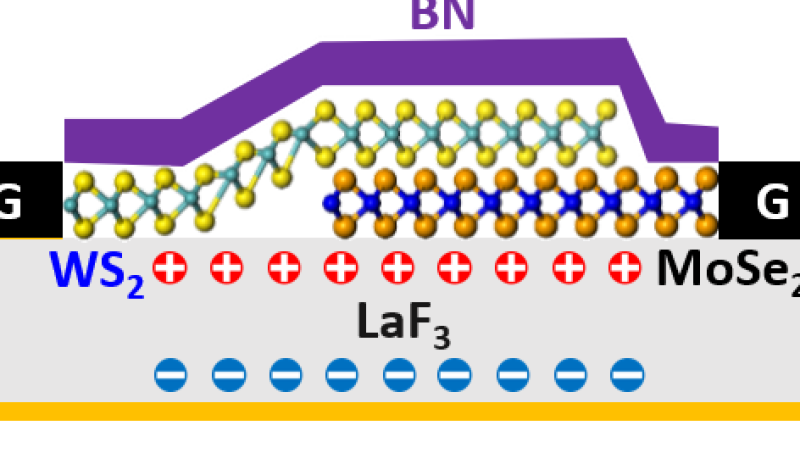May 27, 2020

In research recently published in Nature Communications, a team of chemical engineering researchers at Rensselaer Polytechnic Institute has significantly furthered its efforts to unlock the extensive possibilities of a type of material known as monolayer transition metal dichalcogenides (TMDCs).
A promising particle found within these TMDCs — known as an exciton — could play a vital role in the future of memory storage, quantum computing, and solar energy harvesting technologies. Sufei Shi, an assistant professor of chemical engineering at Rensselaer, is a leader in this pioneering area of study.
In this research, Shi and his team pushed their efforts along this line to hetero-bilayer. By stacking two monolayer TMDCs with desired properties — each atomically thin — on top of one another, unprecedented control of excitons can be achieved. This hetero-bilayer can be viewed as a new building block approach to developing materials, and this newly published work finds a way to efficiently tune the properties of the new building blocks reversibly.
For example, in one setup, the exciton is subject to a phenomenon known as an ultrafast carrier transfer at the interface. This leads to electrons residing in one material while the holes — the positively charged counterpart — reside within the other material. This efficient carrier separation is critical for converting light into electricity, such as solar energy harvesting.
In another setup, the exciton can be concentrated in one material, giving rise to enhanced photoluminescence, which is critical for light emission applications. The reversible switch between the two systems — controlled by electrical means — is not possible in conventional materials and illustrates the new opportunities offered by this artificially constructed, atomically thin, building block approach. It will inspire future applications in quantum optoelectronics.
In other research recently published in Physical Review X, Shi and his team exhibited an optical version of quantum hall effect — a demonstration that has previously been difficult to see optically.